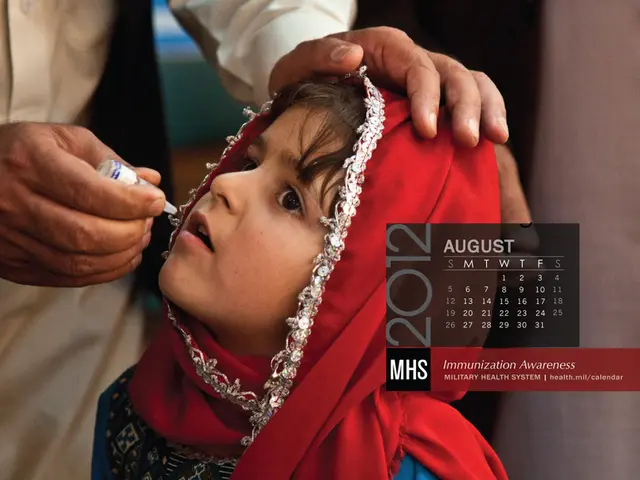Distinguishing between Age Spots and Skin Cancer: Recognizing the Key Differences
In the realm of aging skin, two common occurrences are age spots and skin cancer. Both can resemble one another, but understanding their distinctive features can help in timely medical action.
Age spots, or solar lentigines, are harmless, brown, flat patches that develop due to excessive melanin production to protect the skin from sun damage. They usually appear from middle age onward, predominantly on sun-exposed areas like the face, hands, and shoulders. On the other hand, skin cancer is malignant and can spread if not treated promptly. Skin cancer often appears as uneven growths or scaly patches, usually caused by harmful UV radiation or other environmental factors.
Skin cancer can be divided into several types: basal cell carcinoma, squamous cell carcinoma, and melanoma. While the former two are commonly found on sun-exposed areas, melanoma usually develops in areas with more melanin, such as the trunk, arms, and legs. Notably, actinic keratosis, a precancerous growth, may resemble age spots but requires medical attention, as it may transform into cancer if left untreated.
When comparing the symptoms, age spots are typically asymptomatic, while skin cancer can cause itching, bleeding, crusting, and non-healing sores. Additionally, age spots are uniformly light brown to black, whereas skin cancer may exhibit various colors, shapes, and sizes depending on the type.
It's essential to monitor skin changes and consult a healthcare professional if any new or unusual marks appear or if existing moles alter in size, shape, or color. Early detection significantly improves the chances of successful treatment.
If suffering from age spots, while there isn't a necessity for treatment since they are harmless, some people opt for cosmetic procedures like creams, lotions, laser treatments, or chemical peels to minimize their appearance. On the other hand, skin cancer treatment options depend on factors such as the type, stage, and individual circumstances. These may include surgical removal, topical therapies, radiation therapy, chemotherapy, immunotherapy, or systemic medication.
In summary, while age spots and skin cancer can appear similar, understanding their differences in symptoms, texture, color, and placement can aid in timely detection and treatment. If unsure about a potential skin abnormality, consulting a healthcare professional is always advisable. Early detection and treatment play crucial roles in securing good health outcomes.
- Seniors may develop age spots, which are harmless, brown, flat patches that resemble uneven growths or scaly patches of skin cancer, especially on sun-exposed areas.
- Dermatology is crucial in diagnosing skin cancer, as it can be divided into types such as basal cell carcinoma, squamous cell carcinoma, and melanoma.
- Otherskin cancer, like melanoma, often appears in areas with more melanin, and can exhibit various colors, shapes, and sizes, sometimes causing itching, bleeding, crusting, and non-healing sores.
- In the realm of medical-conditions, skin care is essential for health-and-wellness, particularly paying attention to skin-conditions like age spots and skin cancer, monitoring changes, and seeking professional advice when necessary.
- Skin-care practices, such as the use of creams, lotions, and cosmetic procedures for age spots, are different from the treatment options for skin cancer, such as surgical removal, topical therapies, radiation therapy, chemotherapy, immunotherapy, or systemic medication.








